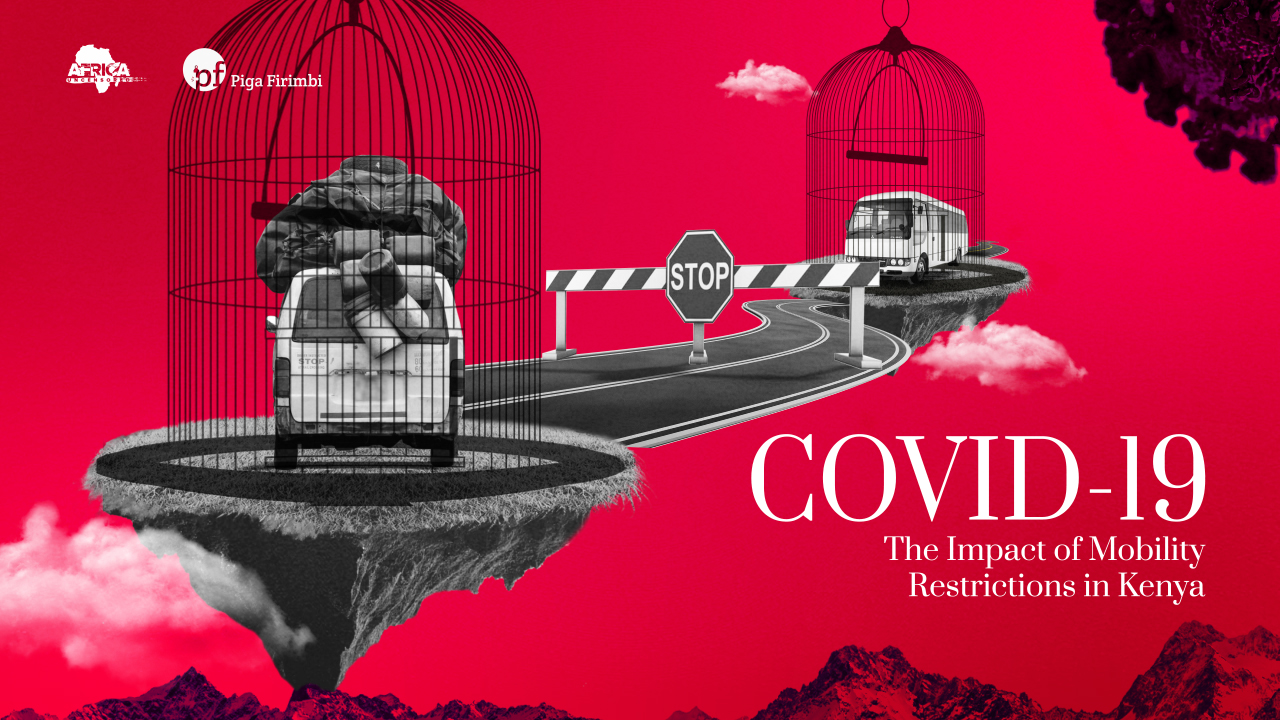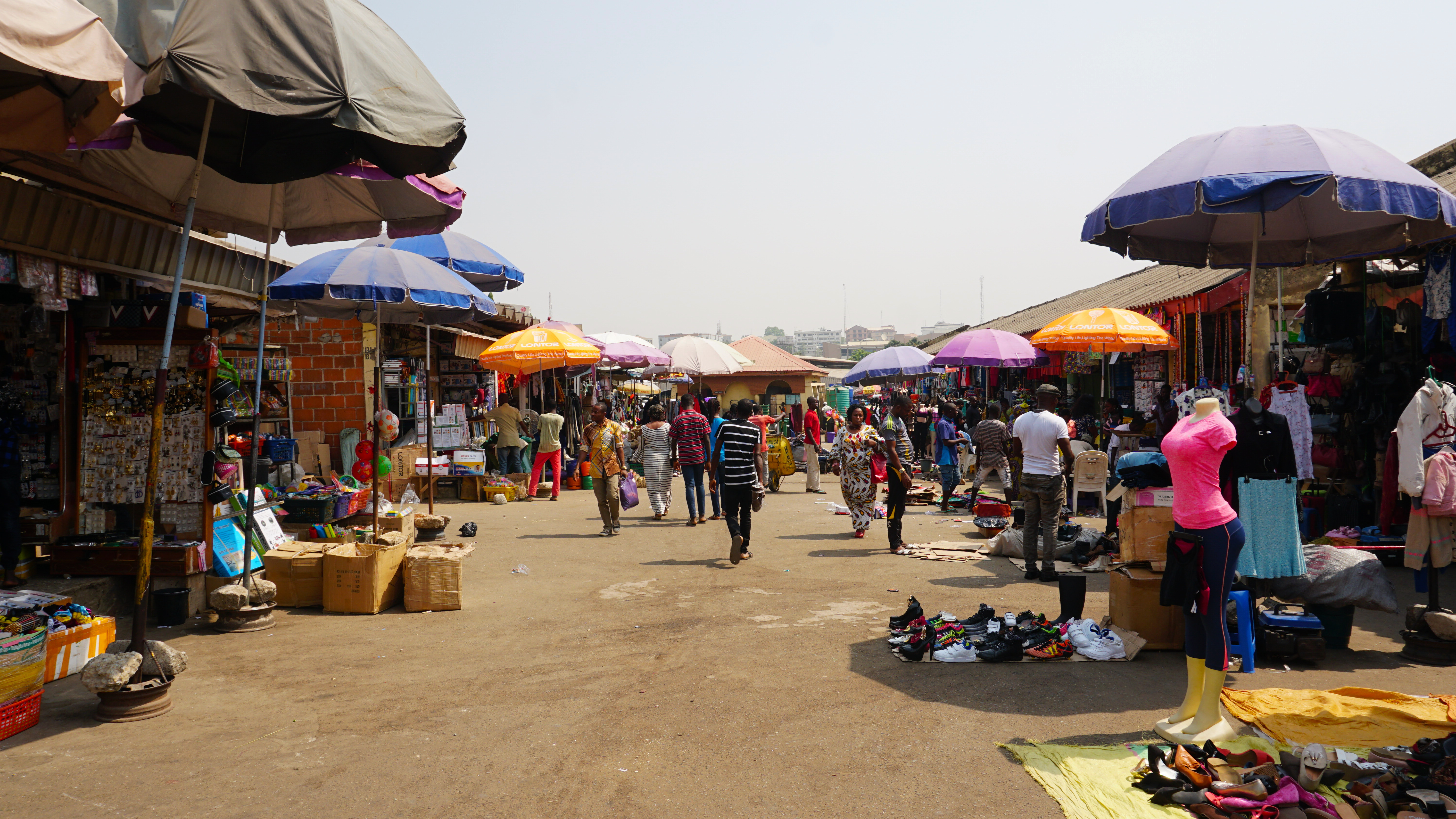
Before the COVID-19 pandemic broke out, Hellen Kerubo used to make a profit of at least Ksh 300 daily from her grocery outlet in Githurai estate, Nairobi. That enabled her to pay rent for both her house and business premise and feed her children. Two months later, she was struggling to survive.
The travel restrictions had made it nearly impossible for her to get the supplies and, if she did get them, then it was at an exorbitant price. The transport cost had hiked forcing her to sell at a slightly higher price in order to make a profit. But she was (and still is) concerned, however, that that will drive away customers.
To understand the extent to which mobility restrictions have impacted Hellen and thousands of other Kenyans, we analyzed data collected by Google.
“As much as the majority are now staying at home, they have fridges and would rather buy goods in bulk which is cheaper than buying from me,” says Hellen. This was evident from the data as visits to groceries and pharmacies have also deduced substantially.
The night curfew has exacerbated the situation. Ordinarily, her business did well from 7 to10 pm, a time when most people had gotten home from work. Now, she has to close the business and ensure she is in the house by the time the curfew starts. The next day finds her vegetables spoilt and, from there, she salvages food for her children.
“They are eating a lot while at home. During school days, they would eat only breakfast and supper,” notes Hellen.
Hellen’s children are not engaging in online learning like some of their counterparts. Their mother doesn’t have a smartphone. Neither can she afford to facilitate their online access. She has resigned to the reality that her kids might lag behind when schools reopen.
Her economic status can’t allow her to stay at home. The little savings she had have gone into buying food for her family.
“I’m afraid I might get infected but what will we eat if I don’t go out?” She poses. To mitigate the risk of infection she wears a mask and sanitizes her hands while within and without her business outlet.
Unlike Hellen, Purity Kanorio can afford to stay at her home in Rongai, Nairobi. A statistician by profession, Kanorio belongs to the middle class. Until four months ago, she was working as an onboarding specialist in the hospitality industry when she got an email from her employer on a Sunday. The email directed her to take unpaid leave with immediate effect.
“I’m still dealing with the shock,” she says. “My salary came from the bookings that guests made in the hotels.”
At present, local and international travellers are having to camp. This means no revenue is generated by hotels and thus no income for people like Kanorio. The reality has hit her hard and made her realize the necessity of having more than one source of income. Her daily routine involves sending out job applications and homeschooling her five-year-old son. To her, online learning for her son is seamless as she has all the requisite resources including reliable internet connection. She also can comfortably feed her family, at least for now, she says.
Retail and recreational outlets have suffered the most, witnessing a reduction of 50%. Transit stations (in the transport sector) come next at 39%, followed by groceries and pharmacies, with more than 20% and parks with about 30 %. These figures are as at 29th March, 2 days after the dawn to dusk curfew was declared in the country. The emergence of more COVID-19 cases progressively reduced movement in all sectors as time went by.
Movement within workplaces began to decrease, a trend that was replicated in groceries and pharmacies, parks and transit stations. Public holidays such as Good Friday, Easter Monday, Eid al-Fitr and Madaraka day also experienced a dip The change over weekends was subtle.
Even though Purity is hopeful things will get better, her optimism goes just as far as August this year. By then, she hopes, the pandemic will have subsided and her employer will recall her to work. Meanwhile, she is honing her statistical skills in readiness for potential jobs and planning to open an online grocery store.
“It’s risky to start a business at such a time but I’m taking calculated steps,” she says. For now, she is confined at her home.
According to our analysis, the time people spent at their residential areas has increased by between 15% and 30%. As from 15th March when a travel ban was issued against countries that had reported COVID-19 cases, a lot changed at the Kenyan borders.
This shows that besides the non-working hours, for example at night, people spent approximately between 3.6 to 7.2 more hours at home. Murang’a was the worst hit by the cessation of movement order which targeted the Nairobi metropolitan area.
A further dip occurred on Friday, 20th March, when pupils and students, as well as employees, were encouraged to work from home. A sharp increase occurred on 21st March (a Saturday) at the transit stations probably because many people were hastening to travel upcountry.
The charts (below) shows how activity had reduced at various retail and recreation centres as well as at transit stations, at first particularly in Nairobi, Mombasa and Kisumu. Even with the opening up of the country, things have not come back to where they were before COVID-19 hit globally.
For Hassan Kabeberi, chairman of the Kenyan Truck Drivers Group, being on the road especially now is an all-time risky engagement. He is often away for long periods of time from his wife and kids who constantly miss and worry about him. When we spoke to him on phone, he had been stuck in traffic for 3 days on the Ugandan side of the Kenya-Uganda border, 10 kilometres from the Malaba border post.
He complained of fatigue and alleged discrimination against truck drivers who were said to be key transmitters of COVID-19 in landlocked countries. Besides Uganda, Hassan delivers cargo to Rwanda, Burundi, and Tanzania. He insisted many drivers were careful not to be infected as they desired to see and be with their families.
“Sometimes we spend two to three days in traffic without sleep, yet we are told not to make any stop in Malaba but go directly to the owner of the cargo,” he lamented. “You can’t even get a bathroom break or an opportunity to stretch your legs.”
Hassan claimed that the situation had worsened by there being only one doctor on the Kenyan side scanning truck drivers for the virus whereas the Ugandan side has over ten doctors. He scoffed at the idea of handing over the cargo to a Ugandan counterpart to minimize the risk for transmitting the coronavirus to another country. To him, the idea is impractical as it would pose security risks to the cargo, the driver and the truck.
“Once I get the cargo from the port of Mombasa, it becomes my responsibility to safely take it to its destination. Should anything happen along the way, I will be answerable,” he explained.
His concern was shared by Hassan Bayusuf, a businessman who owns a fleet of trucks in Kenya. He wondered what would happen if, for instance, the driver siphoned the cargo fuel and sold it before it got to its destination. At the moment, only 150 of Hassan’s trucks are in operation. He has given each of his drivers masks, sanitizers and disinfectants. He says the rest of his drivers are either working locally or on paid leave and insisted that no one’s salary had been reduced.
He commended the existence of the curfew and said it benefitted the drivers as they got to rest after driving for long distances.
“We hope things will get better soon,” he said.
This story was supported by Code for Africa’s WanaData program and the Pulitzer Center.
COVID-19 Update: The connection between local and global issues–the Pulitzer Center's long standing mantra–has, sadly, never been more evident. We are uniquely positioned to serve the journalists, news media organizations, schools, and universities we partner with by continuing to advance our core mission: enabling great journalism and education about underreported and systemic issues that resonate now–and continue to have relevance in times ahead. We believe that this is a moment for decisive action. Learn more about the steps we are taking.












